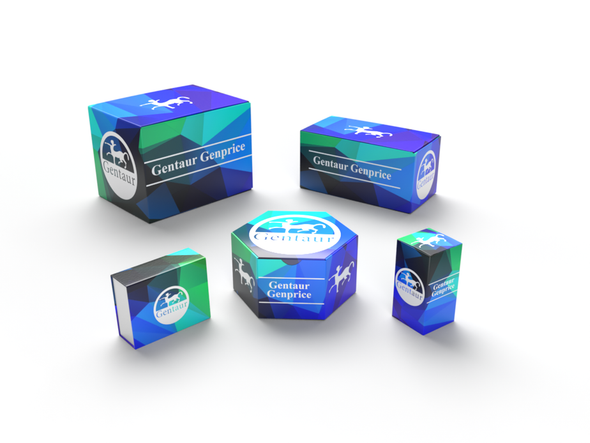Description
CDC42EP4 Antibody | 26-936 | Gentaur UK, US & Europe Distribution
Host: Rabbit
Reactivity: Human, Mouse
Homology: N/A
Immunogen: Antibody produced in rabbits immunized with a synthetic peptide corresponding a region of human CDC42EP4.
Research Area: Other
Tested Application: E, WB
Application: CDC42EP4 antibody can be used for detection of CDC42EP4 by ELISA at 1:62500. CDC42EP4 antibody can be used for detection of CDC42EP4 by western blot at 1 μg/mL, and HRP conjugated secondary antibody should be diluted 1:50, 000 - 100, 000.
Specificiy: N/A
Positive Control 1: 721_B Cell Lysate
Positive Control 2: N/A
Positive Control 3: N/A
Positive Control 4: N/A
Positive Control 5: N/A
Positive Control 6: N/A
Molecular Weight: 38 kDa
Validation: N/A
Isoform: N/A
Purification: Antibody is purified by peptide affinity chromatography method.
Clonality: Polyclonal
Clone: N/A
Isotype: N/A
Conjugate: Unconjugated
Physical State: Liquid
Buffer: Purified antibody supplied in 1x PBS buffer with 0.09% (w/v) sodium azide and 2% sucrose.
Concentration: batch dependent
Storage Condition: For short periods of storage (days) store at 4˚C. For longer periods of storage, store CDC42EP4 antibody at -20˚C. As with any antibody avoid repeat freeze-thaw cycles.
Alternate Name: CDC42EP4, BORG4, CEP4, KAIA1777, MGC17125, MGC3740
User Note: Optimal dilutions for each application to be determined by the researcher.
BACKGROUND: CDC42EP4 is a member of the CDC42-binding protein family. Members of this family interact with Rho family GTPases and regulate the organization of the actin cytoskeleton. The protein has been shown to bind both CDC42 and TC10 GTPases in a GTP-dependent manner. When overexpressed in fibroblasts, the protein was able to induce pseudopodia formation, which suggested a role in inducing actin filament assembly and cell shape control.The product of this gene is a member of the CDC42-binding protein family. Members of this family interact with Rho family GTPases and regulate the organization of the actin cytoskeleton. This protein has been shown to bind both CDC42 and TC10 GTPases in a GTP-dependent manner. When overexpressed in fibroblasts, this protein was able to induce pseudopodia formation, which suggested a role in inducing actin filament assembly and cell shape control.










